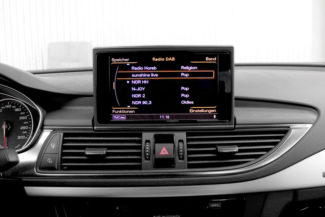Could Spain reconsider the implementation of DAB digital radio?
Tras dos décadas desde el inicio de emisiones de radio digital con tecnología DAB en España, la penetración del servicio digital de radio continúa siendo nula frente al entorno europeo que ha llevado a cabo la migración, incluso en muchos países adoptando la segunda generación del estándar DAB+.
He Grupo Parlamentario Izquierda Confederal (Adelante Andalucía, Més per Mallorca, Más Madrid, Compromís, Geroa Bai y Catalunya en Comú Podem) ha presentado en el Senado una Proposición de Ley de medidas urgentes para el impulso de la radiodifusión sonora digital terrestre.
Mientras que en el caso de la transición a la televisión digital terrestre el proceso de apagado de las emisiones analógicas finalizó el 3 de abril de 2010, en el caso de la radio, el proceso de transición a la tecnología digital no ha discurrido con igual éxito hasta la fecha.
Con posterioridad mediante el Real Decreto 1287/1999, de 23 de julio, se aprobó el Plan Técnico Nacional de la Radiodifusión Sonora Digital Terrestre. En este Plan Técnico quedaban contemplados los elementos esenciales para el desarrollo de este nuevo servicio bajo la norma europea Digital Audio Broadcasting (DAB) y se caracterizaban las distintas redes destinadas a la emisión de los distintos servicios, con gestión directa e indirecta, en los diferentes ámbitos territoriales.
Si bien en 2000 se iniciaron emisiones regulares en las redes de cobertura nacional (FU-E, MF-I y MF-II) contempladas en el citado Plan Técnico, no ocurrió lo mismo con el resto de los servicios de las otras redes autonómicas y locales. Únicamente llegaron a celebrarse los concursos autonómicos de concesiones para la explotación del servicio en régimen de gestión indirecta previstos en dicho Real Decreto en Cataluña e Islas Baleares, aunque tan solo se iniciaron emisiones en Cataluña.
Tampoco se logró alcanzar una cobertura poblacional del 80 % antes de junio de 2006, tal y como se preveía en el citado Real Decreto. La cifra se estancó años antes al llegar al 51 % y fueron las redes de cobertura nacional (FU-E, MF-I y MF-II) las que permitieron alcanzarla.
 A pesar de ese 51 % de cobertura, la ciudadanía no comenzó a consumir radio en DAB de manera relevante. El principal motivo fue el desconocimiento, puesto que no se desarrolló la imprescindible estrategia de comunicación propia de este tipo de procesos de transición y por tanto no se efectuó ninguna campaña promocional adecuada para presentar la nueva programación, la nueva tecnología y las ventajas que esta ofrecía al conjunto de los ciudadanos.
A pesar de ese 51 % de cobertura, la ciudadanía no comenzó a consumir radio en DAB de manera relevante. El principal motivo fue el desconocimiento, puesto que no se desarrolló la imprescindible estrategia de comunicación propia de este tipo de procesos de transición y por tanto no se efectuó ninguna campaña promocional adecuada para presentar la nueva programación, la nueva tecnología y las ventajas que esta ofrecía al conjunto de los ciudadanos.
Aparte de ello, la carencia de contenidos exclusivos y atractivos diferenciados de los disponibles en las emisiones analógicas, no motivó el inicio del consumo, ya que la oferta en DAB estaba basada, en su mayor parte, en emisoras que emitían la misma programación en FM. A ello hubo que sumarle que la oferta en los canales tradicionales de distribución de receptores domésticos y para vehículos era escasa, con precios poco asequibles. Lo mismo ocurría con los kits de adaptación para el parque de vehículos existente.
Tras casi dos décadas del inicio de emisiones de radio digital con tecnología DAB, la penetración del servicio seguía siendo prácticamente nula. Por ello, hubo un intento de relanzamiento mediante la elaboración de un plan de digitalización del servicio de radiodifusión sonora terrestre, aprobado por el Consejo de Ministros y publicado mediante Resolución de 13 de julio de 2011 de la Secretaría de Estado de Telecomunicaciones y para la Sociedad de la Información.
A pesar de ello, tampoco se consiguieron los objetivos previstos debido a la falta de ejecución. Además, se redujo transitoriamente la obligación de cobertura del 50 % de la población al 20 %, estableciéndose un plazo de 1 año desde su aprobación para alcanzar una cobertura poblacional del 20 % con tecnología DAB+. Esta cobertura, además, debería ser similar a la cobertura existente en FM (interiores, túneles…), en aquellas zonas en las que se proporcionase.
Sin embargo, lejos de resolver a la migración de DAB a DAB+ y de sentar las bases para un despliegue efectivo, el efecto obtenido fue contrario al perseguido. De hecho, no se llegó a migrar en DAB+ y la cobertura en DAB quedó reducida al 20 % poblacional.
De esta manera, el servicio se deterioró notablemente y lo que era una situación provisional se convirtió en permanente. Se dejó, además, sin cobertura a audiencia muy escasa pero fiel que había iniciado recepción en DAB en todo el territorio nacional, con excepción de las áreas metropolitanas de Madrid y Barcelona que concentran la mencionada cobertura del 20 % poblacional.
Desde entonces, junio de 2011 hasta 2020 no se ha producido ningún avance. El consumo de radiodifusión sonora digital terrestre sigue siendo prácticamente nulo y solo hay servicios DAB en las citadas áreas metropolitanas, con una oferta de contenidos igual de limitada que hace casi dos décadas y con grandes dificultades de recepción en interiores.
Situación en otros países
Los despliegues de redes de radiodifusión sonora digital terrestre están avanzando en muchos países. Suiza (con planes de apagado de la FM para 2024), Dinamarca, Alemania o Reino Unido tienen coberturas superiores al 97 %, Bélgica y Países Bajos del 95 %, Eslovenia del 73 %, Italia del 82 %, República Checa del 66 %, Austria del 60 %, Polonia del 56 %, Irlanda del 52 % o Suecia del 42 %. Incluso Francia inició emisiones en DAB+ en junio de 2018 y su cobertura ya supera el 20 %.
En cuanto a las emisoras que transmiten a través de radiodifusión sonora digital terrestre, y según los últimos datos disponibles de la Unión Europea de Radiodifusión (UER), cabe destacar que el número de emisoras de radio digital terrestre ha crecido un 13 % en la zona UER en los últimos dos años, pasando de 1.503 a 1.697 emisoras.
 En este momento existen 544 emisoras, un tercio de todas las existentes en radio digital terrestre, que difunden programación exclusiva que no se emite en FM, añadiendo valor a la oferta radiofónica. El 69 % de estas emisoras son privadas. En cuanto al ámbito territorial, el 43 % emite a nivel nacional. De todas las emisoras de radio digital terrestre, el 67 % son privadas.
En este momento existen 544 emisoras, un tercio de todas las existentes en radio digital terrestre, que difunden programación exclusiva que no se emite en FM, añadiendo valor a la oferta radiofónica. El 69 % de estas emisoras son privadas. En cuanto al ámbito territorial, el 43 % emite a nivel nacional. De todas las emisoras de radio digital terrestre, el 67 % son privadas.
Ante este panorama, con esta proposición de ley se pretende articular medidas urgentes para la implantación coordinada de la radiodifusión sonora digital terrestre, con calendarios de implantación armonizados en los diferentes ámbitos territoriales.
España no puede quedarse descolgada de Europa y debe comenzar a ofrecer de manera efectiva a los ciudadanos la posibilidad de acceder a un mayor número de programas y de servicios, con mayor calidad, garantizando la debida pluralidad de la oferta y sentando las bases de la futura evolución tecnológica de la radio, con una cadena de valor digitalizada extremo a extremo y que permita la recepción de programación de radio lineal digital en abierto, sin suscripción a plataformas o pagos por conexión a Internet.
Acceso al Boletín Oficial de las Cortes Generales (Senado), de 2 de julio de 2020.
Did you like this article?
Subscribe to our NEWSLETTER and you won't miss anything.




